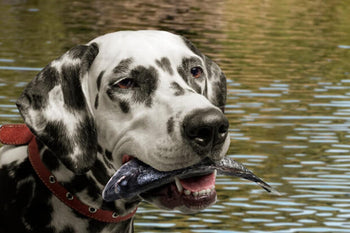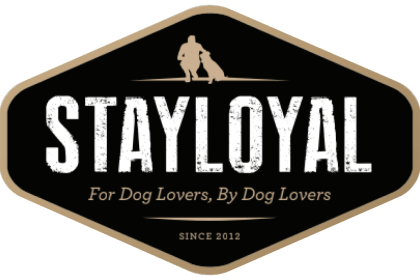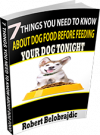Something Should Be Fishy About Your Dog’s Skin Care Regime

Your dog’s skin and coat health is a direct reflection on the diet he is being fed. One of the first things you notice if you see some pictures of rescued dogs is the abysmal condition of their coats due to lack of good nutrition. Just like we need vitamins for healthy skin, nails, and hair, your dog also needs certain nutrients. Some of the best out there are Omega fatty acids 3 and 6.
Omega 3 & 6 fatty acids are polyunsaturated fatty acids that are important because our bodies needs them for a variety of functions including cell growth and brain and nerve function. Omega 6 is also an anti-inflammatory. For both dogs and humans, these acids are “essential” meaning they cannot be produced in the body and must come from food sources.
When it comes to skin and coat health, Linoleic acid (an Omega 6) can help improve water permeability in the skin. Couple this with Omega 3s, which helps with dry, flaky skin, scaly skin related to many skin disorders and even inflammation caused by allergies – flea, food or environmental – and you’ve got a powerhouse skin care regime. And while we are talking about skin, it’s important to note that one of the Omega 3s is DHA, which has been shown to be important to your puppy’s brain development (check out this study for more on that). http://www.petfoodindustry.com/articles/3280-effects-of-dha-on-puppiesa-neurocognitive-development
It’s important to note that once you add Omegas to your dog’s diet, the change isn’t immediate. Like most body changes, it can take several months (4-6 even) before you may see the affects. After all, your dog has a lot of skin and coat to heal. So be patient when waiting for the effects and don’t give up thinking it’s not working. A lot is going on inside your dog that you can’t see.
Omega 3 and 6 fatty acids can be sourced from plant and marine life. Omega 6s are commonly found in oils from corn, soybean, sunflower as well as nuts and seeds. Omega 3s are found in walnuts and flaxseeds, but the best source is marine – salmon, mackerel, tuna, krill oil, etc. The source of the fatty acids is important – you don’t want to feed your dog massive amounts of nuts or plant oils because they have lower percentages of the these fatty acids – meaning you would have to give your dog a lot more of the plant oils to get the same amount of Omegas from a fish oil.
You can supplement your dog’s diet by buying vitamins or Omega pills. But, just like with humans, often these concentrated formulas are wasted because the body can’t absorb all of the nutrients at once and you end up losing most of them through urine. Instead, it’s better to incorporate sources in your dog’s daily food diet. For example, feeding food with salmon or if you feed fresh, adding salmon to your dog’s protein rotation.
It is also important that the ratio is right. Omega 3 and 6 fatty acids compete against one another in the body so if the ratio is not correct, then your dog will not be reaping all the benefits of both acids. Currently, the thought is that the ratio should be 5:1 of Omega 6 to Omega 3. Unfortunately, most pet foods do not have this ratio, because Omega 3’s are more expensive. If the food you are feeding does not give you the ratio, contact them and find out. Our grain-free food has the correct 5:1 ratio and our Omega 3s are sourced from fish only, so if you’re looking to add some Omega’s to your dog’s diet, check out our ingredient list.








